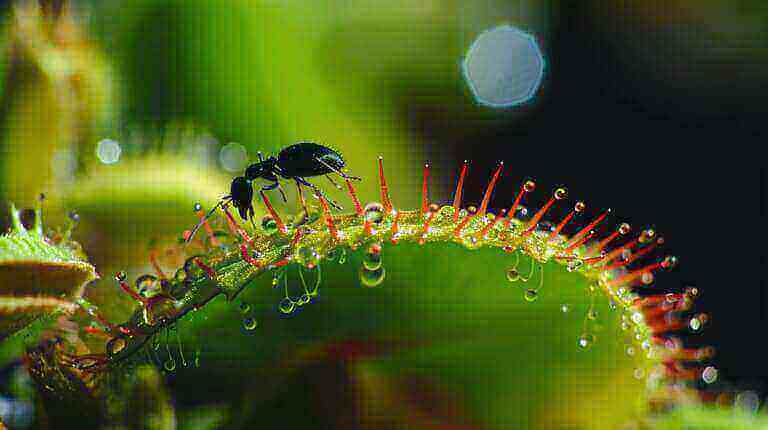Dracaena plants are generally hardy and disease-resistant, but they can still be susceptible to a few common houseplant pests and diseases. Despite their resilience, it is essential to be aware of these potential issues to ensure the health and vitality of your dracaena indoor plants.
Key Takeaways:
- Spider mites, mealybugs, and scale insects are common pests that can infest dracaena plants.
- Insecticidal soap, neem oil, or alcohol solutions can be used to control mealybugs and spider mites.
- Insecticidal soap or oil can be effective in controlling scale insects.
- Root rot and leaf spot are common diseases that can affect dracaena plants.
- Controlling root rot involves removing affected plants, discarding infected soil, and repotting in fresh soil.
- To manage leaf spot, remove affected leaves, improve air circulation, and avoid overwatering.
- Regular monitoring and prompt action are crucial for preventing and controlling pests and diseases.
By being proactive and implementing preventive measures, you can keep your dracaena plants thriving and free from common pests and diseases. Remember to regularly monitor your plants and take prompt action to address any issues that may arise. With proper care and attention, your dracaena plants will continue to bring beauty and vibrancy to your space.
Common Pests of Dracaena Plants: Prevention and Treatment
Dracaena plants can be affected by various pests, including mealybugs, thrips, scale insects, spider mites, aphids, and fungus gnats. These pesky intruders can wreak havoc on your plants if not dealt with promptly. However, with proper prevention and treatment, you can keep your dracaena plants healthy and pest-free.
One effective way to prevent these pests from infesting your dracaena plants is to maintain a clean and healthy environment. Regularly inspect your plants for any signs of infestation, such as yellowing leaves or sticky residue on the leaves and stems. If you spot any pests, isolate the affected plant to prevent the infestation from spreading to other plants.
| Pest | Prevention | Treatment |
|---|---|---|
| Mealybugs | Keep plants clean and dust-free. Monitor for signs of infestation. | Apply an insecticidal soap or alcohol solution to affected areas. |
| Thrips | Improve air circulation around plants. Remove weeds and debris. | Apply insecticidal soap or neem oil to control thrips. |
| Scale Insects | Regularly inspect plants for signs of scale insects. Prune affected branches. | Apply an insecticidal soap or oil to control scale insects. |
| Spider Mites | Mist plants regularly to increase humidity. Remove infested leaves. | Apply insecticidal soap or neem oil to control spider mites. |
| Aphids | Attract natural predators like ladybugs. Spray plants with a strong stream of water. | Apply insecticidal soap or neem oil to control aphids. |
| Fungus Gnats | Avoid overwatering. Allow the soil to dry out between waterings. | Use sticky traps or apply beneficial nematodes to control fungus gnats. |
Remember to follow the instructions on the pesticides or treatments you use and always test on a small area of the plant before applying it entirely. Monitoring and prevention are key to keeping your dracaena plants pest-free. With regular care and attention, your plants will thrive and bring beauty to your indoor space.
Common Diseases of Dracaena Plants: Prevention and Treatment
Dracaena plants can be prone to certain diseases such as fungal diseases, mildew, powdery mildew, sooty mold, fluoride toxicity, leaf spot disease, and root rot. These diseases can weaken your plants and affect their overall health and appearance. However, with proper prevention and treatment, you can keep your dracaena plants thriving.
Fungal Diseases:
Fungal diseases are common in dracaena plants, especially when they are exposed to excessive moisture or poor air circulation. One of the most common fungal diseases is powdery mildew, which appears as a white, powdery coating on the leaves. To prevent fungal diseases, ensure proper air circulation around your plants and avoid overwatering. If powdery mildew or other fungal diseases develop, remove affected leaves and treat the plants with a fungicidal spray according to the manufacturer’s instructions.
Fuzzy White Mold, Powdery Mildew and Sooty Mold:
Fuzzy white mold, powdery mildew or sooty black fungus on your dracaena likely indicates sneaky pests feeding undetected. They produce sticky honeydew that mold thrives on. Though mold appears the issue, pests are the root cause.
Carefully scan leaves, stems and soil for insects like mealybugs, soft scales or spider mites that cause moldy buildup. Use a magnifying glass and spray plants down to reveal.
If bugs are spotted, quickly treat with insecticidal soap, horticultural oil or neem oil spray per label instructions. Repeat applications weekly until the infestation is gone.
With pests controlled, the honeydew feast ends. Gently wipe leaves to remove stickiness that mildew and mold grows on. Stay vigilant in monitoring for pests – it’s vital for preventing mold long term!
Fluoride Toxicity, Spots On The Leaves, and Root Rot:
Fluoride toxicity can occur when dracaena plants are exposed to high levels of fluoride in water or soil. This can lead to leaf discoloration, browning, and stunted growth. To prevent fluoride toxicity, use filtered water or rainwater for watering your plants. Leaf spot disease is another common issue that causes dark spots or lesions on the leaves. It is usually caused by overwatering and poor air circulation. To prevent leaf spot disease, avoid overwatering and improve air circulation around your plants. Root rot is a serious disease that affects the roots of dracaena plants, leading to wilting, yellowing leaves, and eventually plant death. To prevent root rot, ensure proper drainage by using well-draining soil and pots with drainage holes. If root rot occurs, remove the affected plants from the soil, discard the infected soil, and repot the plant in fresh, sterile soil.
Regular observation and care are essential in maintaining healthy dracaena plants. By following preventive measures and taking prompt action against pests and diseases, you can ensure that your dracaena plants thrive and bring beauty to your indoor or outdoor space.
| Disease | Symptoms | Prevention | Treatment |
|---|---|---|---|
| Fungal diseases | White, powdery coating on leaves | Proper air circulation, avoid overwatering | Remove affected leaves, fungicidal spray |
| Mildew and sooty mold | Honeydew, sticky coating on leaves | Control pest infestations | Insecticidal soap or oil |
| Fluoride toxicity | Leaf discoloration, browning | Use filtered water or rainwater | N/A |
| Leaf spot disease | Dark spots or lesions on leaves | Avoid overwatering, improve air circulation | Remove affected leaves |
| Root rot | Wilting, yellowing leaves, plant death | Proper drainage, well-draining soil | Remove affected plants, repot in fresh soil |
Tips for Maintaining Healthy Dracaena Indoor Plants
To ensure the health and vitality of your dracaena plants, it is important to follow proper plant care practices, implement effective pest management strategies, and avoid overwatering.
First and foremost, providing the right plant care is crucial. Dracaena plants thrive in well-draining soil, so be sure to use a high-quality potting mix that allows excess water to flow through. Additionally, place your plants in a location with bright, indirect light. Direct sunlight can scorch the leaves, while too little light can result in weak growth.
Pest management is another essential aspect of dracaena plant care. Regularly inspect your plants for signs of pests like spider mites, mealybugs, and scale insects. If you spot any infestations, treat them promptly with insecticidal soap or neem oil. These solutions are effective in controlling pests without harming your plants.
Furthermore, repotting your dracaena plants every 2-3 years is vital for their well-being. Choose a slightly larger pot and fill it with fresh potting soil. This allows the roots to have enough space to grow and ensures optimum nutrient uptake. Remember to gently remove any excess soil from the roots during the repotting process.
Improving air circulation around your plants is also beneficial. Good airflow helps prevent the buildup of moisture, which can lead to fungal diseases like root rot and leaf spot. To increase air circulation, you can place a small fan near your plants or simply move them to a spot with better airflow.
Lastly, it is crucial to avoid overwatering your dracaena plants. These plants prefer slightly dry conditions, so water them only when the top inch of soil feels dry to the touch. Overwatering can cause root rot and other water-related issues. Remember, it’s better to underwater than to overwater your dracaena plants.
By following these tips for maintaining healthy dracaena plants, you can ensure their longevity and enjoy their beauty for years to come. Remember to always monitor your plants and take swift action if you notice any signs of pests or diseases. Your dracaena plants will thank you with lush foliage and vibrant growth!
FAQ
Are dracaena plants prone to pests and diseases?
Yes, while dracaena plants are generally hardy and disease-resistant, they can still be susceptible to a few common pests and diseases.
What are some common pests that can affect dracaena plants?
Common pests that can affect dracaena plants include spider mites, mealybugs, and scale insects.
How can I control spider mites on my dracaena plant?
Spider mites can be controlled with an insecticidal soap or neem oil.
How can I control mealybugs on my dracaena plant?
Mealybugs can be controlled with an insecticidal soap or alcohol solution.
How can I control scale insects on my dracaena plant?
Scale insects can be controlled with an insecticidal soap or oil.
What are some common diseases that can affect dracaena plants?
Common diseases that can affect dracaena plants include root rot and leaf spot.
How can I control root rot on my dracaena plant?
Root rot can be controlled by removing affected plants from the soil, discarding the infected soil, and repotting the plant in fresh soil.
How can I control leaf spot on my dracaena plant?
Leaf spot can be controlled by removing affected leaves, improving air circulation, and avoiding overwatering.
What should I do if I notice pests or diseases on my dracaena plant?
It is important to regularly monitor your dracaena plant and take prompt action to control any pest or disease issues. Follow the specific control methods mentioned for each pest or disease.







